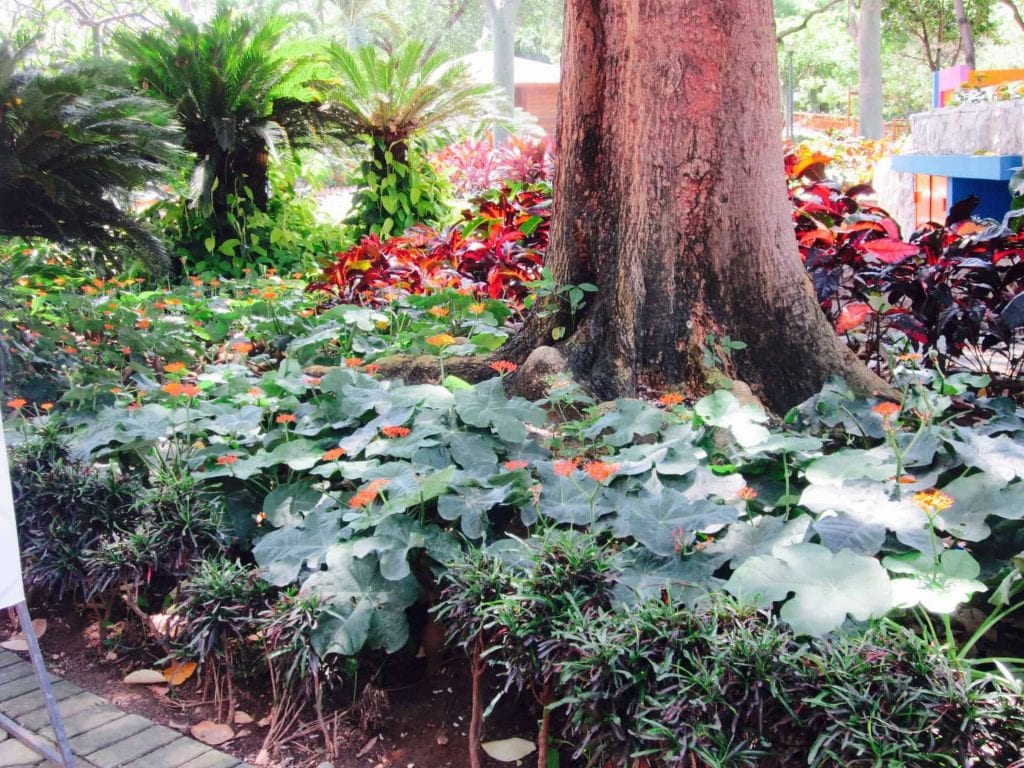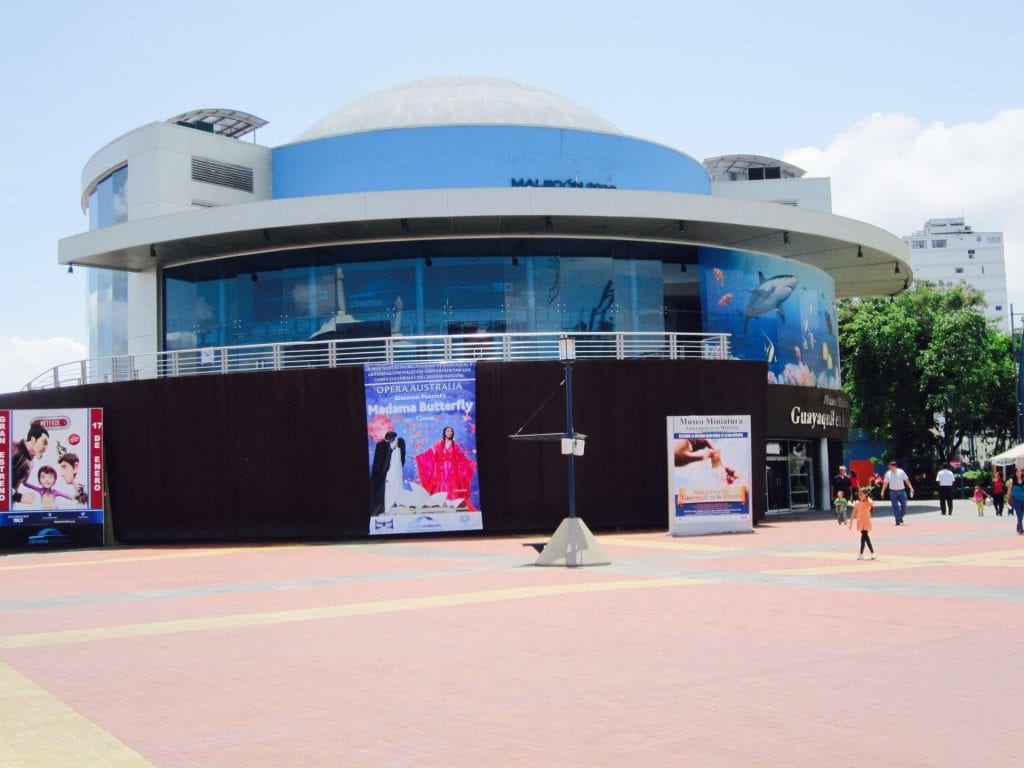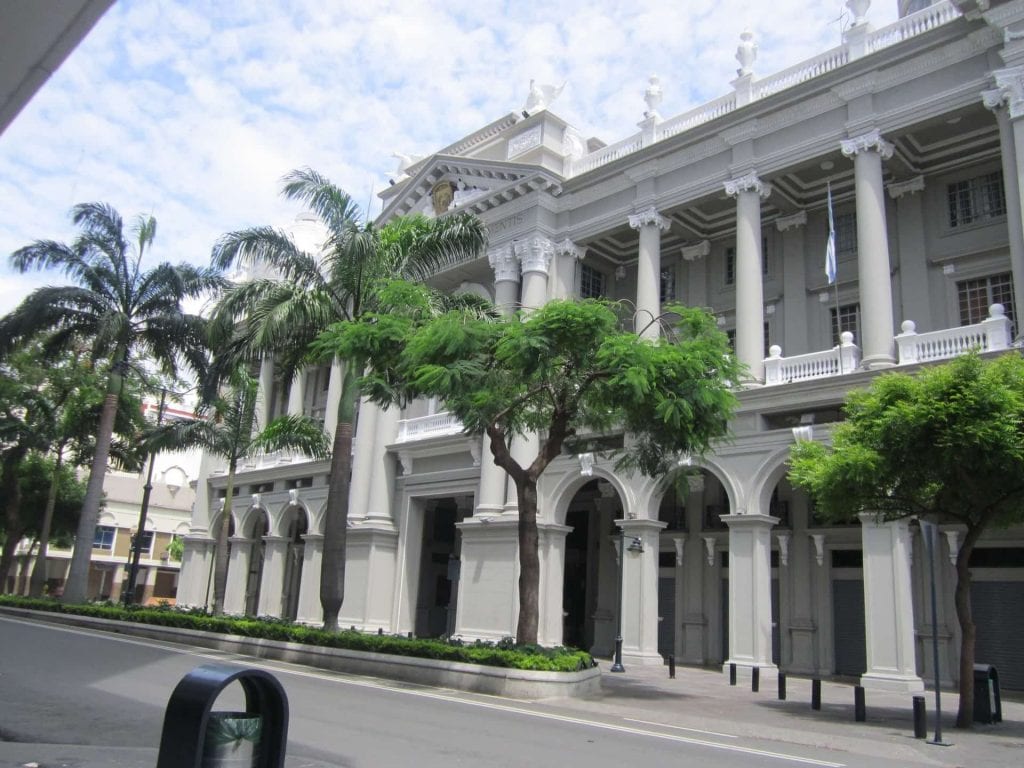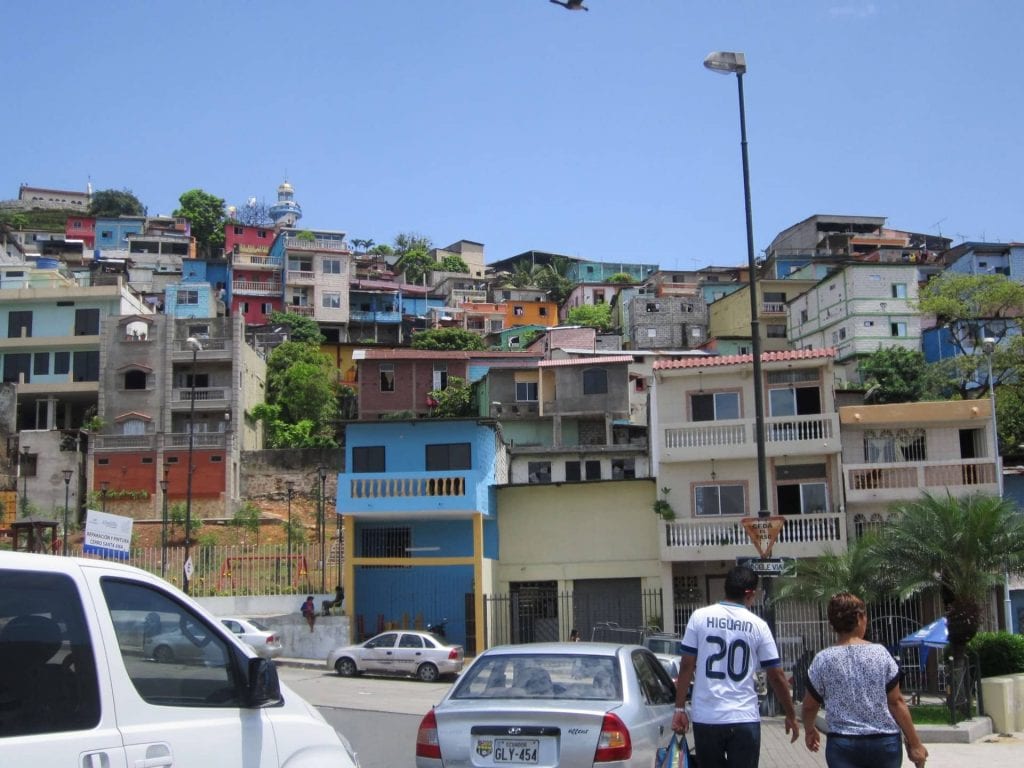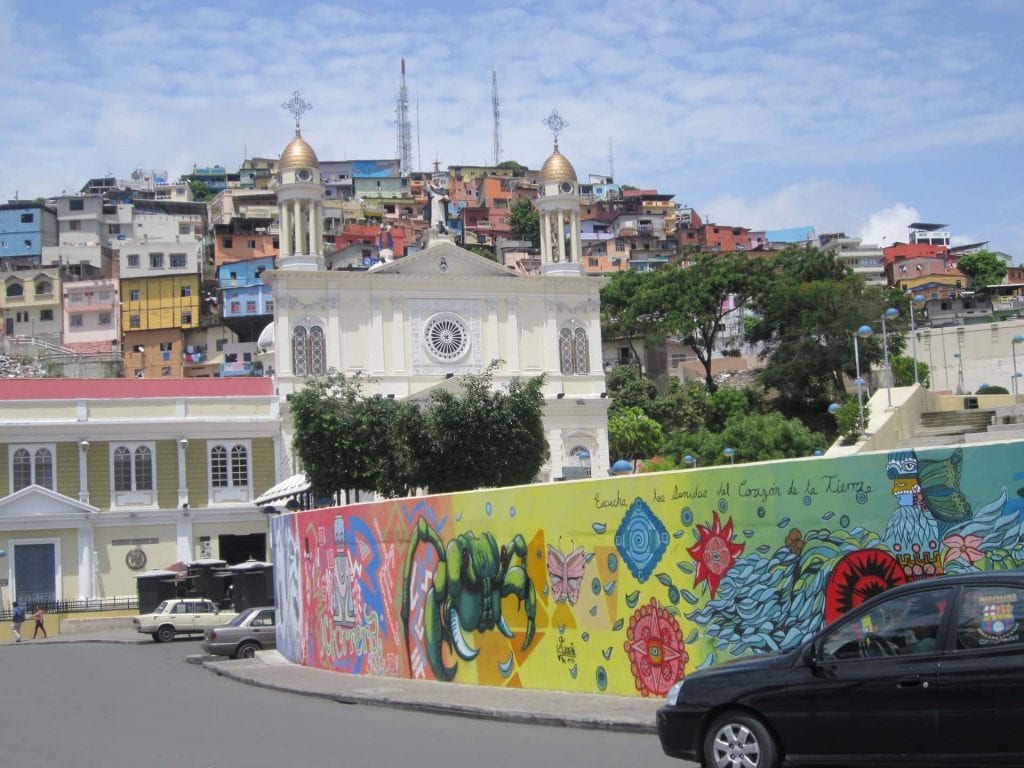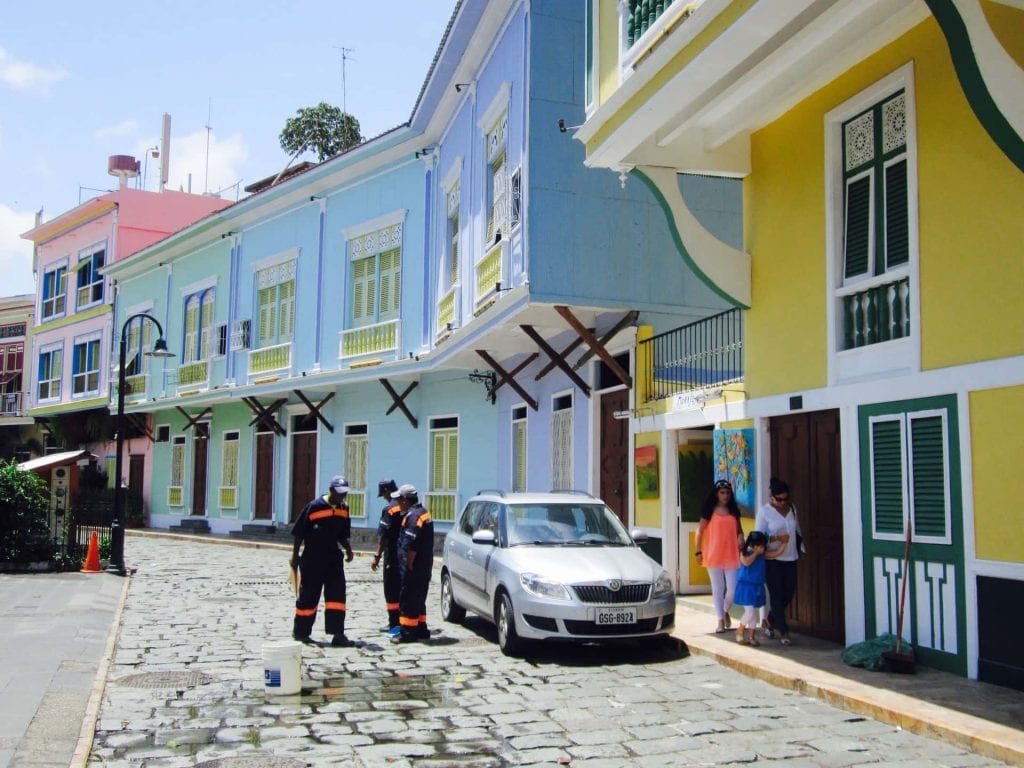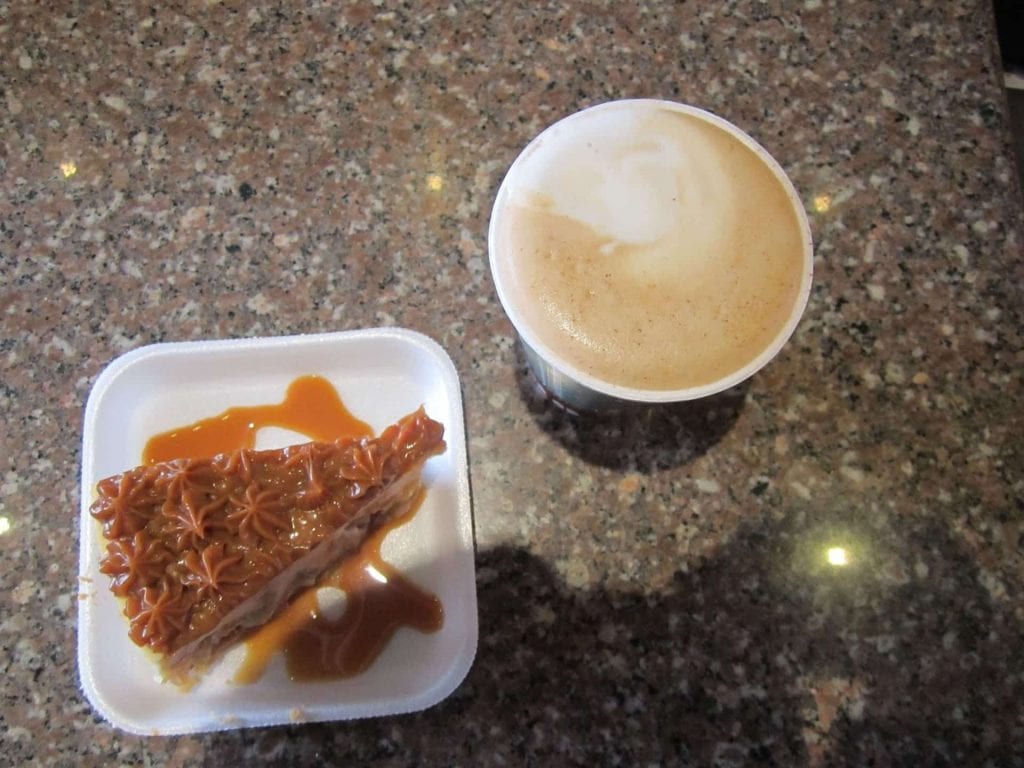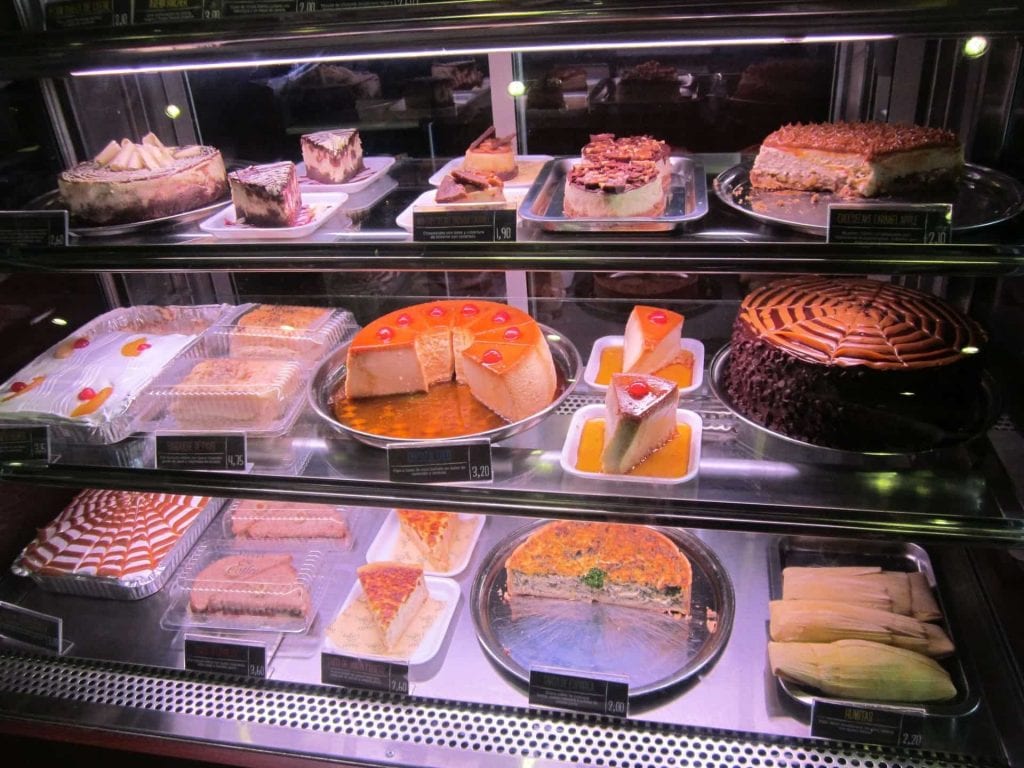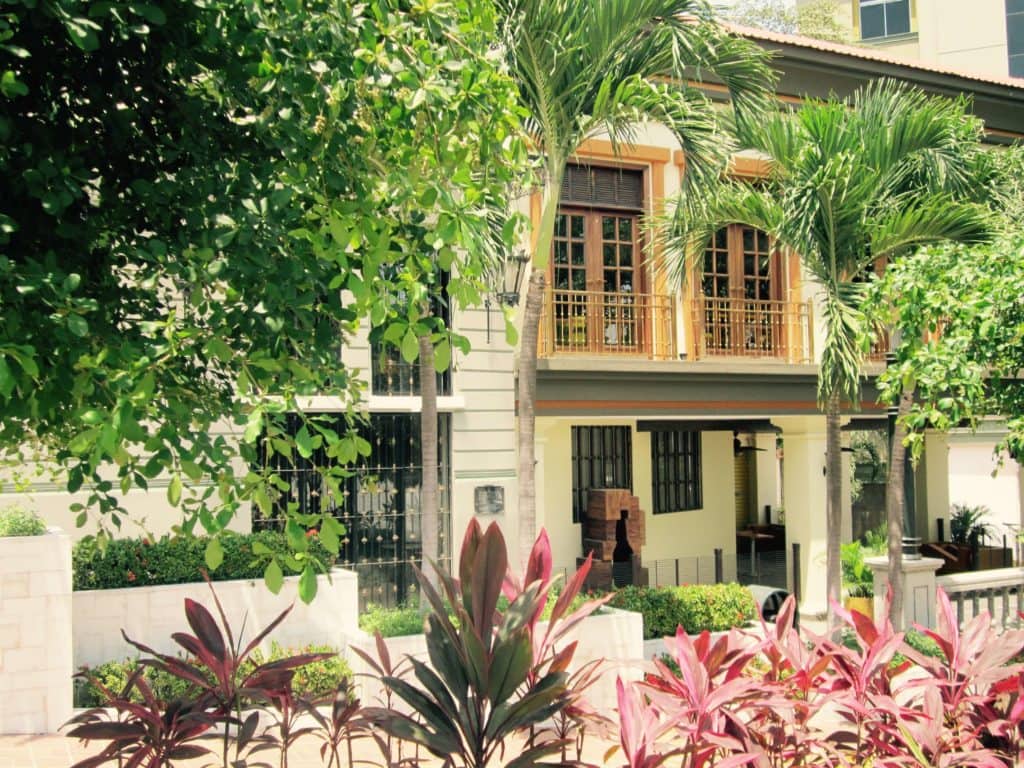
Guayaquil is the financial heart of Ecuador, a large, vibrant, sprawling Port City, with a population of three million people. Founded in 1537, unlike Quito and Cuenca with historic Colonial architecture, it lacks a Colonial section as this was destroyed by fires that ravaged the old wooden structures in 1896. Located on the Guayas River at Sea Level on the Pacific Coast it has a tropical savanna climate, with daytime temperatures reaching the high “eighties” Fahrenheit. Puerto Maritimo is the Country’s main port and controls most of the imports and exports giving it great economic relevance because of the burgeoning import export industry. It has a different energy to the Colonial Cities of Cuenca and Quito and is teeming with people. Guayaquil is Ecuador’s most modern city with a few skyscrapers to prove it !! It had a deservedly poor reputation based on its lawlessness and high crime rate, but in the last few years it has undergone a major transformation, improved infrastructure with several urban regeneration and public safety schemes. These have created beauty out of derelict areas and decimated the crime rate. It is also the starting point for tours of the Galapagos Island, Ruta del Sol and other eco tours.
The advise I had received about stopping in Guayaquil was: Unless you are passing through on your way to the Galapagos Islands, don’t spend any time in Guayaquil. It is a crime ridden, dangerous, dirty, commercial city.
This proved to be total misinformation.
I would be in Guayaquil anyway, as it was the final stop for the Tren Crucero, one of the highlights of my stay in Ecuador, a four day tour in a restored train that operated between Cuenca and Guayaquil. Not blindly following advise, I found this to be another example of false information that is “out there”. Two fellow travelers from the Train, Antoinette and Betty had told me to contact the best guide they had ever used, anywhere, and as they were both seasoned world travelers I followed their recommendation and arranged a City Tour with Eduardo Meneses – and very glad I did. On meeting Eduardo, I realized that he is not just a guide, but Guayaquil is his passion and he had been showing visitors his City since he was a teenager in High School. After a few hours touring with him, I was convinced. Eduardo has lived through his City’s ups and downs and knows every detail, every nuance, its long and complicated history and was able to bring it to life.
A MUST while in Guayaquil is a visit to the Iguana Park that has been there since 1880. It features fish ponds, birds and the main attraction, the Iguanas.
Although the Iguanas are fenced and contained, it seems they are everywhere, climbing all over the place, lazing in the sun and reclining on the tree branches in the trees they share with the birds where, because of their“camouflage” it was difficult to discern them as they blended in with the vegetation. Most were stretched out on the branches sleeping while the birds twittered and flew around. The park and its “inhabitants” are fed and maintained by the City. The visitors also feed them treats like white bread and mango slices – it’s a tough life !! Iguanas are reptiles that belong to the lizard family and my guide knew everything about them. The males are very aggressive during mating season, fighting with the other males to win the female’s favors and he pointed out some battle scarred Iguanas who were missing parts of their “armor”. Their sex life is fascinating and quite complicated and would require publishing in a separate X-rated “Letter” – or, better still, contact Eduardo direct for details!!
The most notable of the urban renewal schemes is the outstanding Malecon (River Walk) “Simon Bolivar” 2000, that now defines the City. It is a mix of green areas and shopping. The entire development covers 4,942 acres in the downtown center of Guayaquil, with a meandering scenic one and a half mile waterfront walk on the Simon Bolivar Pier along the River Guayas. Previously a barren and crime ridden area, it has been transformed into a world class showpiece with exquisitely landscaped gardens. Accompanied by Eduardo, I was amazed to see the diversity of the attractions that were available to all – monuments, parks, shops, restaurants, a casino, a children’s playground, a restored coach from the Tren Crucero for kids and their parents to explore, a theater, a movie house, restaurants, a wine bar and plenty of seating for relaxing. It is securely policed to be sure everyone is safe. Most important, it is free to enter and can be enjoyed by all. Although everyone and his family or girlfriend or parents was parading on the Malecon that day, it was spotlessly clean and free of litter. Not thinking I may be commenting on the obvious, I did just that. Eduardo remained stoney faced and told me cleanliness and respect for public places is part of their culture, taught to Children from a young age. It is unacceptable to litter. Trash bins were placed at regular intervals for this purpose and the area was litter free.

Attracting attention on the Malecon, is the most famous Monument in Guayaquil, and possibly the whole of Ecuador, the Semicircular “Hemiciclo de La Rotonda” an outstanding piece of art designed by Spanish Sculptor, Jose Antonio Homs, executed in marble. It shows the Liberators, Simon Bolivar and Jose San Martin, meeting on July 26th, 1822, when they agreed that Guayaquil would be annexed to the Gran Colombia. (Gran Colombia was composed of Ecuador and Venezuela). This effectively liberated Ecuador from the Spanish Crown. The site of the present monument is the exact place that Simon Bolivar and Jose San Martin met all those years ago.
The architecture of the buildings in the downtown area and near the Malecon are extraordinarily beautiful, reminiscent of buildings I had seen in Europe. My guide Eduardo explained that because of the hot climate, the Classically styled buildings were designed with colonnades and covered porticos . The reason is that by walking under the covered area, pedestrians are protected from the burning sun throughout the day. He also said the administration of Guayaquil is super efficient in all departments. As an example, he recounted how he had lost his identity card and when he went to replace it, it took eight minutes from the time he spoke to the first official until he received his new identity card – try that at your local Department of Motor Vehicles !!

Above the Malecon are the restored neighborhoods of Cerro Santa Anna and Las Penas. Cerro Santa Ana has been regenerated and is now a major tourist attraction with bars, restaurants and art galleries adorning its streets. From a distance, it is picturesque, with the Church of Santa Ana on the lower level, and painted houses built into the ascending hillside. This is another example of how the administration took control of a problem and turned it from a dangerous neighborhood into a tourist attraction. The police, no longer threatened by the inhabitants are now present to maintain the status quo.
Las Penas was the original residential section of Guayaquil. dating back to the 1500’s when the City was founded. Tragically it was destroyed by the fire in 1896 – El Incendio Grande.” After the fire, Las Penas was rebuilt in the pictureque Neo Classic style, around charming well maintained plazas, antique style lampposts, and balconies with decorative ironwork. Originally occupied by writers and artists, the atmosphere has been re-created. It is charming to walk on centuries old cobblestone streets passing Art Galleries, historic Bed and Breakfast Inns, little shops, restaurants and bars. Built on a series of different levels, it is connected from top to bottom by four hundred and sixty five steps, each one clearly numbered. Walking to the top is rewarded with a beautiful view over the water. Here again I must comment on he cleanliness. It was a Sunday morning early that we were there and workers with strong power hoses, were hosing down the streets and sidewalks in preparation for the day.
So many insights were gained from Eduardo who explained there is ongoing rivalry between Quito and Guayaquil. At its fiercest, it carries onto the sports field when the two cities find themselves on opposing teams in a “futbol” match, which can turn violent. Guayaquil is regarded as Liberal and Quito is conservative. The money is made in Guayaquil , the center of Finance and spent in Quito, the center of Government. Each one regards “their” City as the most important, when in fact they are mutually important for different reasons.
Not meaning to exacerbate the argument, I thought Guayaquil had the best coffee and pastry shops, by far. Eduardo introduced me to “Coffee and Sweet,” a chain of pastry and coffee shops. Not only were the cakes delicious but they were served with special sauces. Apple pie is good, but served with a special caramel sauce, it is great !! It was difficult to choose and everything was beautifully plated.
In the last few years, due to the remarkable improvements that have been made, Guayaquil has risen in the firmament to show off it’s star power. In addition to increased commerce as a result of the Port, there is new industry and construction, luxury housing developments for the new rich, a burgeoning theater film and arts scene and interesting night life. Lacking the UNESCO Heritage Designation of Quito and Cuenca, Guayaquil has much to offer the tourist before they leave for the Galapagos Islands or time spent on the Ruta del Sol. So much information was gained from Eduardo. My only regret was that I had not allocated enough time, because Eduardo does more extensive tours beyond Guayaquil.
My Guide:
Eduardo Meneses.
email. GuayaquilAguidedvisit@gmail.com
http://guayaqulaguidedvisit
Tel, 593-987-720319









